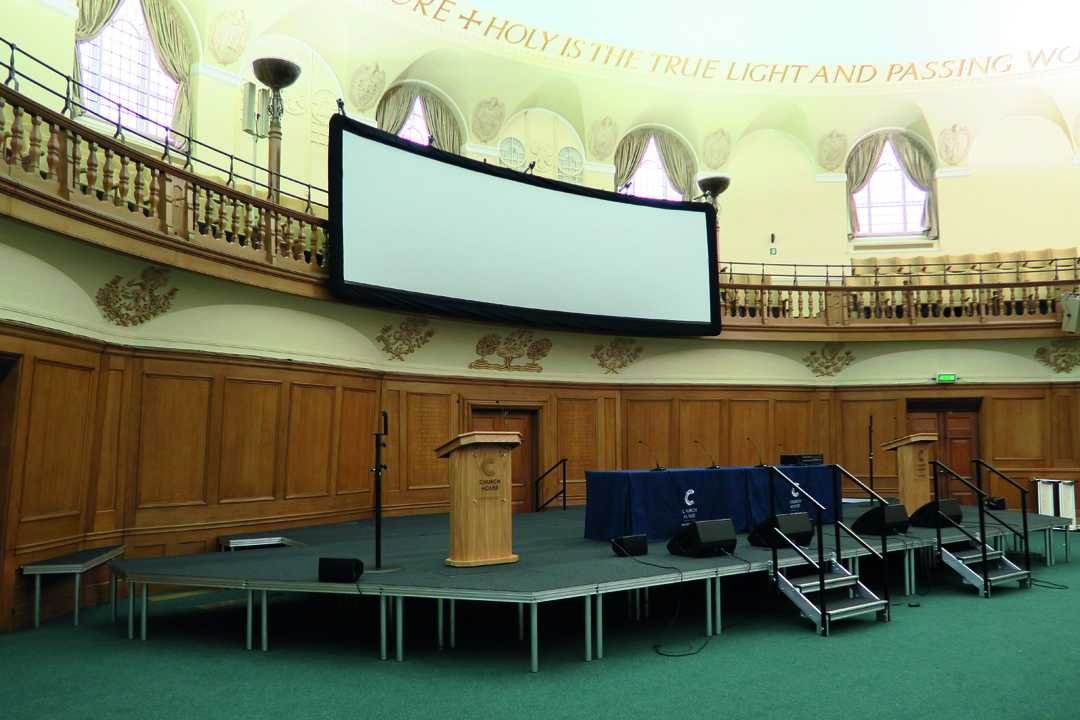Church House enters new era with d&b
- Details

The reputation and range of d&b audiotechnik meant that the brand was Church House AV manager Ian Locke’s first choice for the upgrade, but he engaged the services of freelance sound designer and engineer Phil Wright to ensure the most appropriate units were selected throughout the cylindrical, dome-roofed venue.
“We undertook some tests with the existing system in the downstairs area, and found that for any given impulse we put into the PA we could measure 10 to 15 distinct arrivals at the measurement microphone. From an intelligibility point of view it really was a bit of a disaster, so resolving that was priority number one for the new d&b system design,” explains Wright.
The answer came in the form of d&b’s Y-Series, designed to suit applications as varied as houses of worship, symposiums and car expos. The installation oriented Yi7P loudspeaker cabinets house two 8” low frequency drivers and a 1.4” compression driver. At Church House, Yi7Ps are flown either side of the main stage and a pair of Yi-SUBs provide low end reinforcement.
The Y-Series products are augmented by a total of seven E6 loudspeakers. These compact multipurpose loudspeakers, with integrated coaxial drivers, have been specified to handle both front-fill and near-fill duties in the downstairs space.
Church House’s upstairs area constituted another distinct challenge for Wright and Locke, who were understandably keen to avoid any negative impact from the balcony-fill and delay system on the downstairs area. A number of different d&b products were considered before they opted for the 16C column loudspeaker. The two-way passive 16C is the smallest column in the xC-Series, housing four 4” neodymium drivers and a 0.75” compression driver mounted on a CD horn.
“At the very time that we were looking into equipment for this area of the assembly hall, d&b was bringing out the 16C, and not only did it immediately hit me as being highly suitable on an aesthetic level, it also allowed us to achieve control down to about 400 Hz. This meant that we could really minimize the amount of information reaching the downstairs area,” observes Wright.
Powering the system is a combination of 10D and 30D amplifiers. Among the newest additions to the d&b audiotechnik amplifier range, these units were developed to suit a wide range of permanent integration applications. Ideal for environments needing lower SPLs, the 2RU, 4-channel 10D features a Class D topology and extended input management functionalities, with separate Input Gain control for each input channel.
After a competitive tender process, London-based RG Jones was appointed to undertake the fit-out of the new system. Jeff Woodford, project engineer at RG Jones, oversaw the installation, which he says proceeded “very smoothly indeed. We had about four people onsite doing cabling work and fitting loudspeakers at any one time. The overall improvement in sound quality is clear for everyone to hear – I would say it is about ten times better than before.”
The opinion is shared by Wright, who reports that the post installation feedback from the first events carried out with the new system has been “extremely positive. Everything has now been installed and aligned as per my design and the guidance of Oran Burns, from d&b GB’s Education and Application Support team. The improvement has been dramatic.”
(Jim Evans)
















